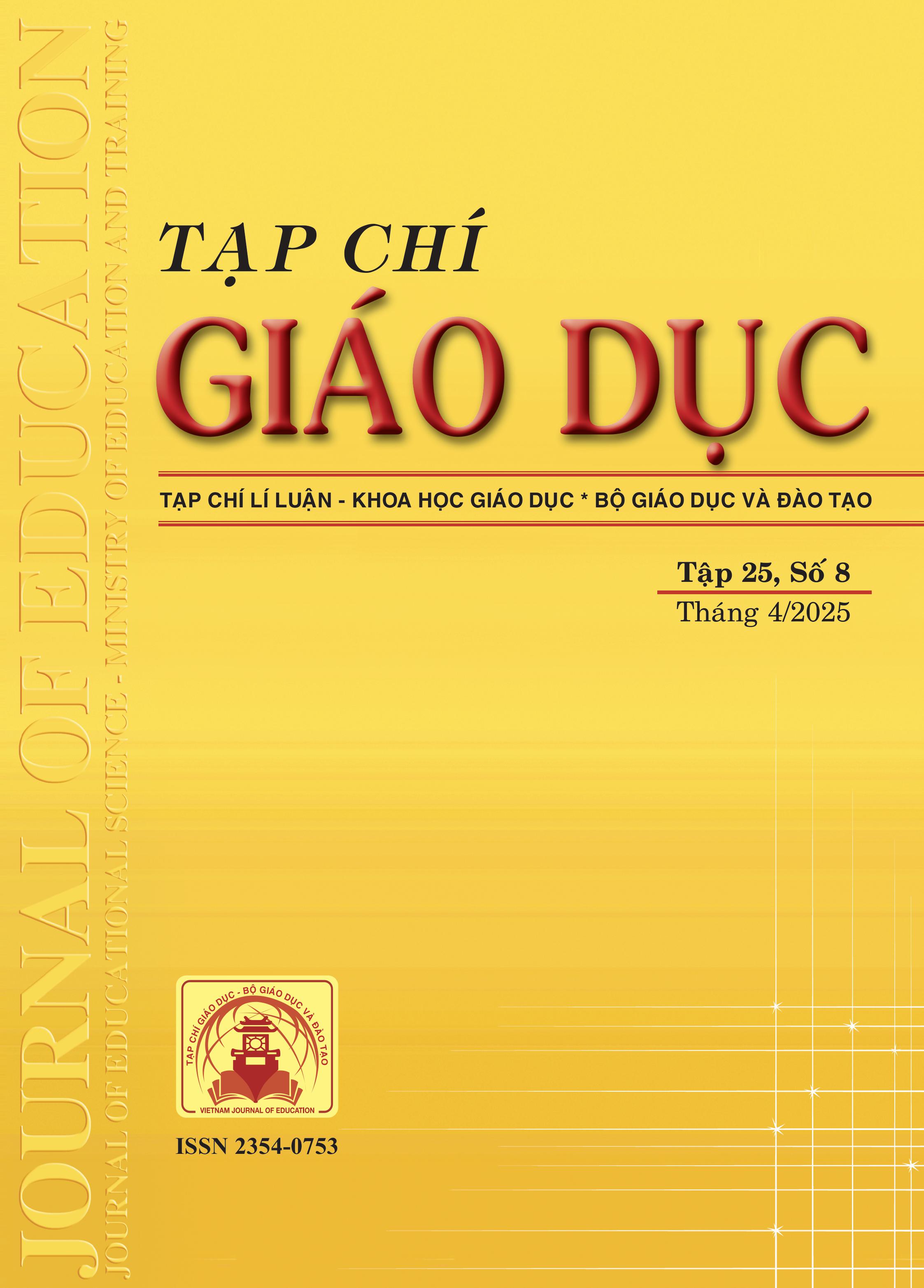Thực trạng dạy và học tiếng Nhật của học sinh tiểu học trong môi trường song ngữ Nhật - Việt
Tóm tắt
The demand for learning Japanese in Vietnam is increasing, especially for children. However, no curriculum framework and Japanese textbooks are specifically designed for primary school students in a Japanese-Vietnamese bilingual environment. This article describes the current situation of teaching and learning Japanese at an international school in Hanoi and evaluates the advantages and disadvantages of the curriculum, textbooks, and pedagogical methods applied. The research results show that a Japanese-Vietnamese bilingual environment supports the development of basic communication skills in Japanese and helps maintain students' Vietnamese proficiency. Based on these findings, the article proposes several solutions to improve the effectiveness of teaching Japanese in a bilingual environment, and highlights the development prospects of the Japanese-Vietnamese bilingual education model in the future.
Tài liệu tham khảo
Bộ GD-ĐT (2018). Chương trình giáo dục phổ thông môn Tiếng Nhật (ban hành kèm theo Thông tư số 32/2018/TT-BGDĐT ngày 26/12/2018 của Bộ trưởng Bộ GD-ĐT).
Cummins, J. (1980). The Cross‐Lingual Dimensions of Language Proficiency: Implications for Bilingual Education and the Optimal Age Issue. TESOL Quarterly, 14(2), 81-103.
Cummins, J., & Early, M. (2011). Identity texts: The collaborative creation of power in multilingual schools. London, UK: Trentham Books.
Đại sứ quán Nhật Bản tại Việt Nam (2021). Tình hình triển khai công tác dạy và học tiếng Nhật tại các tỉnh thành phố và các trường phổ thông ở Việt Nam. https://www.vn.emb-japan.go.jp/itpr_ja/20210304JapaneseLanguage_1_vn.html
Nakajima, K. (2022).Bairingaru kyōiku no hōhō: 12-sai made ni oya to kyōshi ga dekiru koto. Aruku Shoten.『バイリンガル教育の方法―12歳までに親と教師ができること』アルク選書シリーズ.
Nguyễn Thị Thu Hà, Nguyễn Thúy Nga (2018). Đào tạo song ngữ cấp tiểu học: Góc nhìn người trong cuộc. Tạp chí Nghiên cứu nước ngoài, 34(3), 1-10.
Quỹ Giao lưu Quốc tế Nhật Bản (2021). Kaigai nihongo kyouiku kikan chousa: Betonamu「海外日本語教育機関調査ベトナム」https://www.jpf.go.jp/j/project/japanese/survey/result/survey21.html
Skutnabb-Kangas, T., & Toukomaa, P. (1976). Teaching migrant children their mother tongue and learning the language of the host country in the context of the socio-cultural situation of the migrant family. Tampere, Finland: Tutkimuksia Research Reports.
Sở GD-ĐT thành phố Hà Nội (2019). Thông tin về các trường có 100% vốn đầu tư nước ngoài, các trường tư thục có giảng dạy chương trình nước ngoài đang hoạt động trên địa bàn thành phố.
Tải xuống
Đã Xuất bản
Cách trích dẫn
Số
Chuyên mục
Giấy phép

Tác phẩm này được cấp phép theo Ghi nhận tác giả của Creative Commons Giấy phép quốc tế 4.0 .












